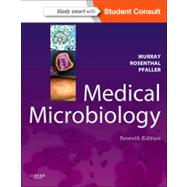
| Introduction | |
| Overview of Medical Microbiology | |
| Commensal and Pathogenic Microbial Flora in Humans | |
| Sterilization, Disinfection, and Antisepsis | |
| General Principles of Laboratory Diagnosis | |
| Microscopy and Microbial Isolation | |
| Molecular Diagnosis | |
| Serologic Diagnosis | |
| Basic Concepts in the Immune Response | |
| Elements of Host Protective Responses | |
| Innate Host Responses | |
| Humoral and Cellular Immune Responses | |
| Immune Responses to Infectious Agents | |
| Antimicrobial Vaccines | |
| Bacteriology | |
| Bacterial Classification, Structure, and Replication | |
| Bacterial Metabolism and Genetics | |
| Mechanisms of Bacterial Pathogenesis | |
| Role of Bacteria in Disease | |
| Laboratory Diagnosis of Bacterial Diseases | |
| Antibacterial Agents | |
| Staphylococcus and Related Gram-Positive Cocci | |
| Streptococcus | |
| Enterococcus and Other Gram-Positive Cocci | |
| Bacillus | |
| Listeria and Erysipelothrix | |
| Corynebacterium and Other Gram-Positive Rods | |
| Nocardia and Related Bacteria | |
| Mycobacterium | |
| Neisseria and Related Bacteria | |
| Enterobacteriaceae | |
| Vibrio and Aeromonas | |
| Campylobacter and Helicobacter | |
| Pseudomonas and Related Bacteria | |
| Haemophilus and Related Bacteria | |
| Bordetella | |
| Francisella and Brucella | |
| Legionella | |
| Miscellaneous Gram-Negative Rods | |
| Clostridium | |
| Anaerobic, Non-Spore-Forming, Gram-Positive Bacteria | |
| Anaerobic Gram-Negative Bacteria | |
| Treponema, Borrelia, and Leptospira | |
| Mycoplasma and Ureaplasma | |
| Rickettsia and Orientia | |
| Ehrlichia, Anaplasma, and Coxiella | |
| Chlamydia and Chlamydophila | |
| Virology | |
| Viral Classification, Structure, and Replication | |
| Mechanisms of Viral Pathogenesis | |
| Role of Viruses in Disease | |
| Laboratory Diagnosis of Viral Diseases | |
| Antiviral Agents | |
| Papillomaviruses and Polyomaviruses | |
| Adenoviruses | |
| Human Herpesviruses | |
| Poxviruses | |
| Parvoviruses | |
| Picornaviruses | |
| Coronaviruses and Noroviruses | |
| Paramyxoviruses | |
| Orthomyxoviruses | |
| Rhabdoviruses, Filoviruses, and Bornaviruses | |
| Reoviruses | |
| Togaviruses and Flaviviruses | |
| Bunyaviridae and Arenaviridae | |
| Retroviruses | |
| Hepatitis Viruses | |
| Unconventional Slow Viruses: Prions | |
| Mycology | |
| Fungal Classification, Structure, and Replication | |
| Pathogenesis of Fungal Disease | |
| Role of Fungi in Disease | |
| Laboratory Diagnosis of Fungal Diseases | |
| Antifungal Agents | |
| Superficial and Cutaneous Mycoses | |
| Subcutaneous Mycoses | |
| Systemic Mycoses Due to Dimorphic Fungi | |
| Opportunistic Mycoses | |
| Fungal and Fungal-Like Infections of Unusual or Uncertain Etiology | |
| Mycotoxins and Mycotoxicoses | |
| Parasitology | |
| Parasitic Classification, Structure, and Replication | |
| Pathogenesis of Parasitic Diseases | |
| Role of Parasites in Disease | |
| Laboratory Diagnosis of Parasitic Disease | |
| Antiparasitic Agents | |
| Intestinal and Urogenital Protozoa | |
| Blood and Tissue Protozoa | |
| Nematodes | |
| Trematodes | |
| Cestodes | |
| Arthropods | |
| Table of Contents provided by Publisher. All Rights Reserved. |
The New copy of this book will include any supplemental materials advertised. Please check the title of the book to determine if it should include any access cards, study guides, lab manuals, CDs, etc.
The Used, Rental and eBook copies of this book are not guaranteed to include any supplemental materials. Typically, only the book itself is included. This is true even if the title states it includes any access cards, study guides, lab manuals, CDs, etc.